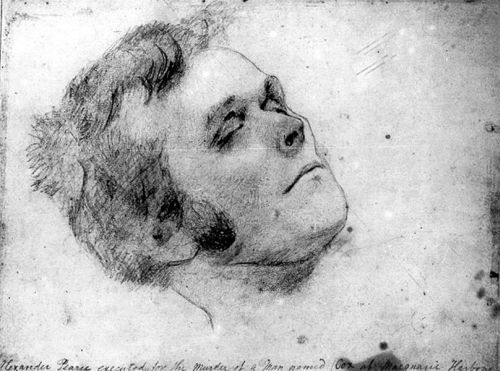 |
 |
|
Irish Community
The Irish Community numbered few before the 1840s when transportation to New South Wales ceased. Between 1840 and 1853, 7248 Irish male and 4068 Irish female convicts arrived in the island, 20 percent of all convicts. They committed relatively fewer local offences than others. After release, many convicted during the Famine of 1845–49 settled in humble occupations or followed the gold rushes on the mainland. The chivalrous Matthew Brady and Martin Cash are among the best-known Irish bushrangers. The infamous Alexander Pearce combined long-distance bushwalking with cannibalism. While Cash ended his life on a small farm, Pearce and Brady were two of the 61 Irish men and two Irish women hanged in Tasmania. Irish political prisoners were a small minority. In 1849, William Smith O'Brien, Thomas Meagher, John Mitchel and four others were sent to Van Diemen's Land after the failed Young Ireland insurgency of 1848. Pardoned or escaped by 1854, the Tasmanian Young Irelanders have been celebrated in numerous subsequent publications. Richard Jones, an Irish Ribbon rebel, forced the appointment of Catholic chaplains after 1843 by a strike against Protestant services. With only about 7 percent of Irish convicts Protestants, the Catholic Church, represented in Tasmania since 1821, was strongly identified with Ireland. After an initial English Catholic bishop, succeeding prelates Daniel Murphy, Patrick Delany and William Barry, and many of their clergy, brothers and nuns were of Irish birth. In the local Anglican Church, seven of 37 clerics before 1848 had qualified in Dublin. Some significant early landowners were Irish Protestants. Roderic O'Connor died a Catholic with 65,000 acres producing fine merino wool. Captain Michael Fenton, of Fenton Forest, helped to establish self-government in Tasmania. Richard Dry, a Protestant transported to New South Wales for United Irish activities in 1797, obtained an extensive land grant at Quamby in northern Tasmania. His son, Sir Richard Dry, became premier of Tasmania. William Talbot, of the County Dublin family of Lord Talbot de Malahide, set up the great Malahide holding in the Fingal Valley. Humbler free immigrants from Ireland often suffered prejudice in the nineteenth century. Relatively few free Irish obtained assisted passages in the 1840s and 1850s. Occasional Orange versus Green clashes ended after the First World War and the Irish Revolution, 1916–21. The Irish helped to open up areas such as Franklin and Cygnet in the Huon region, and Deloraine and Latrobe in the north-west. Irishman James Crotty was influential in establishing the Mount Lyell Mining Company on the west coast. This became the cradle of the Labor Party in which many Irish were involved. Edmund Dwyer-Gray was the only Tasmanian premier of Irish birth, but Labor premiers Earle, Lyons, Ogilvie and Cosgrove had Irish ancestry. Liberal premier Robin Gray had a similar background. With perhaps 18 to 25 percent of the population of Irish descent, the Tasmanian Irish are now part of an Anglo-Saxon-Celtic establishment. Further reading: R Davis, 'The Irish in Tasmania', in A Bartlett (compiler), Our heritage in history, Launceston, 1991; J Williams, Ordered to the island, Sydney, 1994. Richard Davis |
Copyright 2006, Centre for Tasmanian Historical Studies |
